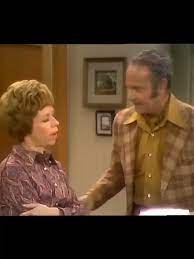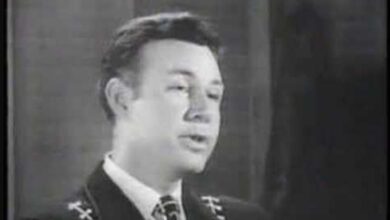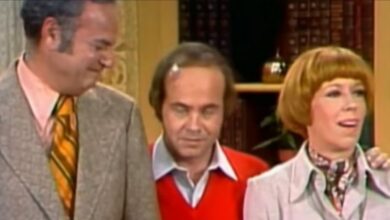Comedy Sabotage: Tim Conway’s Legendary Meltdown as the “World’s Worst Scene Partner”
Comedy sabotage takes center stage as Tim Conway unleashes controlled chaos, redefining what it means to be “the world’s worst scene partner” on The Carol Burnett Show. His mischief is deliberate, his timing razor-sharp, and the resulting unpredictability turns a simple sketch into something unforgettable, proving how effortlessly he could twist order into hilarious disorder.
Few performers mastered the art of breaking their co-stars the way Conway did, and in the notorious rehearsal sketch built around this idea, he elevates disruption into high comedy. Set up as a straightforward dramatic practice, the moment quickly dissolves into comedic bedlam as Conway wanders into his own universe, determined to derail the performance without ever dropping his innocent expression.

The premise is straightforward: Carol Burnett is trying to deliver a dramatic monologue with sincerity and focus. Conway, meant to support her with quiet, serious reactions, instead wanders mentally and physically off track. He stumbles over lines, invents bizarre responses, and stretches every pause to the breaking point, transforming silence itself into a carefully engineered joke that throws Carol completely off rhythm.

Harvey Korman is the first to break, shoulders trembling as he tries to remain composed. Carol isn’t far behind, biting back laughter while Conway escalates his antics with uncanny timing — adding coughs in the middle of her lines, misinterpreting cues so badly it becomes its own art form, or gazing blankly around the room as though he’s forgotten his purpose entirely.

The brilliance of Conway’s approach lies in his subtleties — he never pushes too hard, never makes the joke obvious, but instead builds disaster particle by particle until the sketch collapses under the weight of its own ridiculousness. Every misstep feels intentional yet natural, and by the time the routine reaches its peak, the theater is roaring with laughter while the performers are barely holding themselves upright.
In this sketch, Conway’s performance shows why he became legendary for derailing live comedy so gracefully. His ability to turn a quiet mistake into a runaway avalanche of hilarity made him beloved by audiences and feared, in the most affectionate way, by his fellow cast members who knew they were never truly safe when he was on stage with them.
Every performer on The Carol Burnett Show had moments of losing control, but Conway perfected the art of triggering those breakdowns strategically. He knew exactly how long to hold a pause, when to shift his gaze, or when to mumble nonsense under his breath to fracture even the steadiest co-star’s composure. The power of his comedy wasn’t in loudness — it was in the microscopic details only he could weaponize so effectively.
What makes this sketch stand out decades later is how relatable the chaos feels. Anyone who has ever tried to stay serious in an inappropriate moment recognizes the desperation in Carol’s eyes as she fights not to burst out laughing. Conway leans into that tension, stretching it until it snaps, and the audience becomes part of that unraveling, laughing harder as the cast loses control.
His understated mischief created an environment where laughter became inevitable. Even when he wasn’t the one speaking, Conway managed to command the moment by doing almost nothing — a slow turn of the head, an exaggerated blink, or a perfectly timed sigh. These tiny decisions stacked together, pushing the sketch into a realm of comedic brilliance very few performers could achieve.
By this point in the sketch, the performance is less about the script and more about the glorious improvisational storm Conway has summoned. Carol’s attempts to stay in character crumble into repeated fits of laughter, and Harvey stops pretending altogether, openly shaking with joy as the audience cheers and claps along with every new absurd twist Conway introduces.
It becomes clear that the real magic isn’t in the written dialogue but in the unpredictable current Conway guides through the scene. His mastery of comedic timing ensures that every interruption feels like both a surprise and a perfectly placed beat, a rhythm of disruption that transforms the entire sketch into something timeless and universally funny.
The deeper one looks at this performance, the more obvious it becomes that Conway wasn’t simply trying to be funny — he was constructing a controlled comedic demolition. His calm demeanor only enhances the chaos around him, and the contrast between his stillness and the escalating laughter amplifies the humor to extraordinary levels.
In the end, this sketch remains a brilliant example of why Conway is remembered not just as a gifted comedian but as a master of subverting expectations. His talent for pushing scenes to the brink without ever breaking character made him an icon of physical and psychological comedy, and this performance stands as one of his finest demonstrations of that rare artistry.





